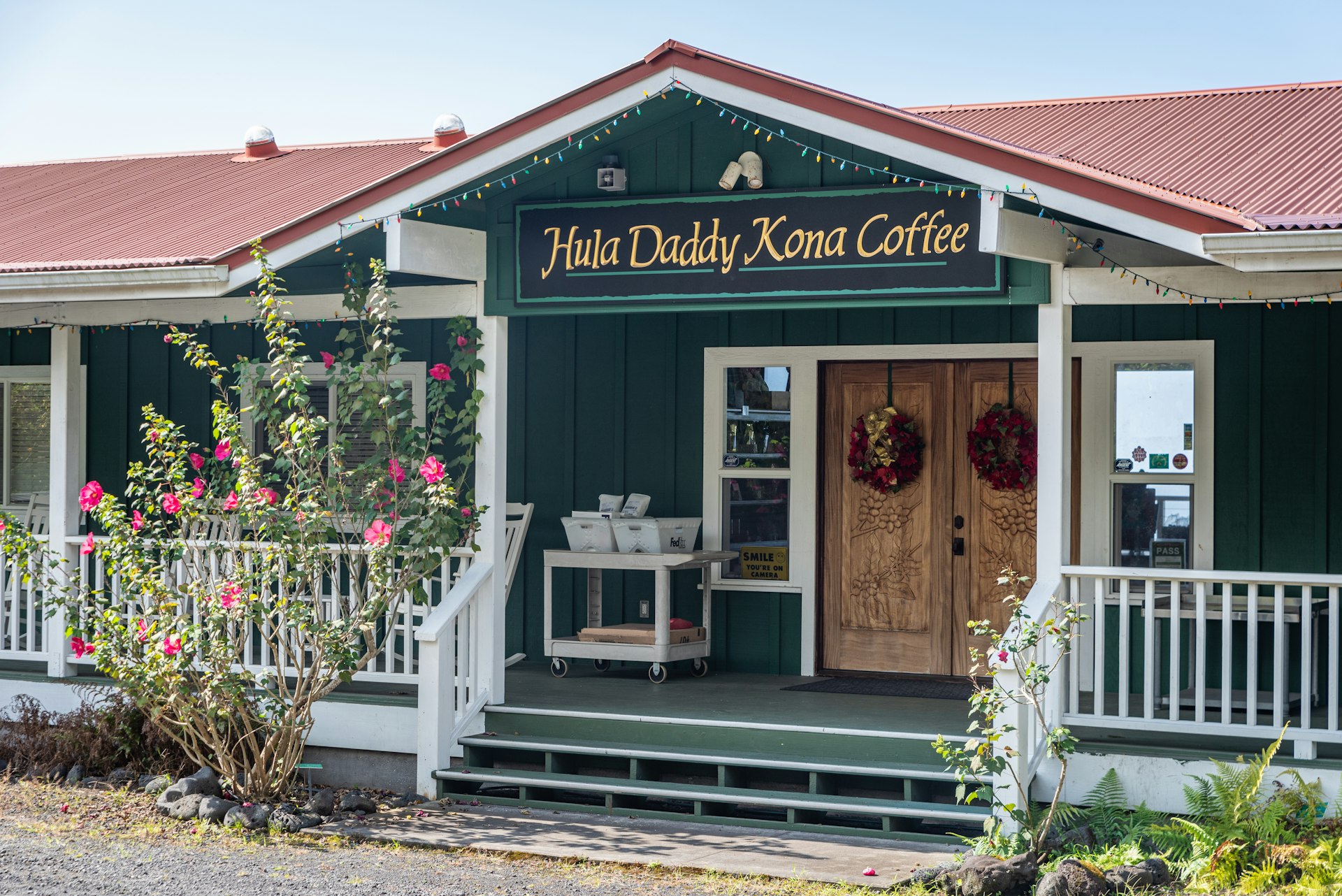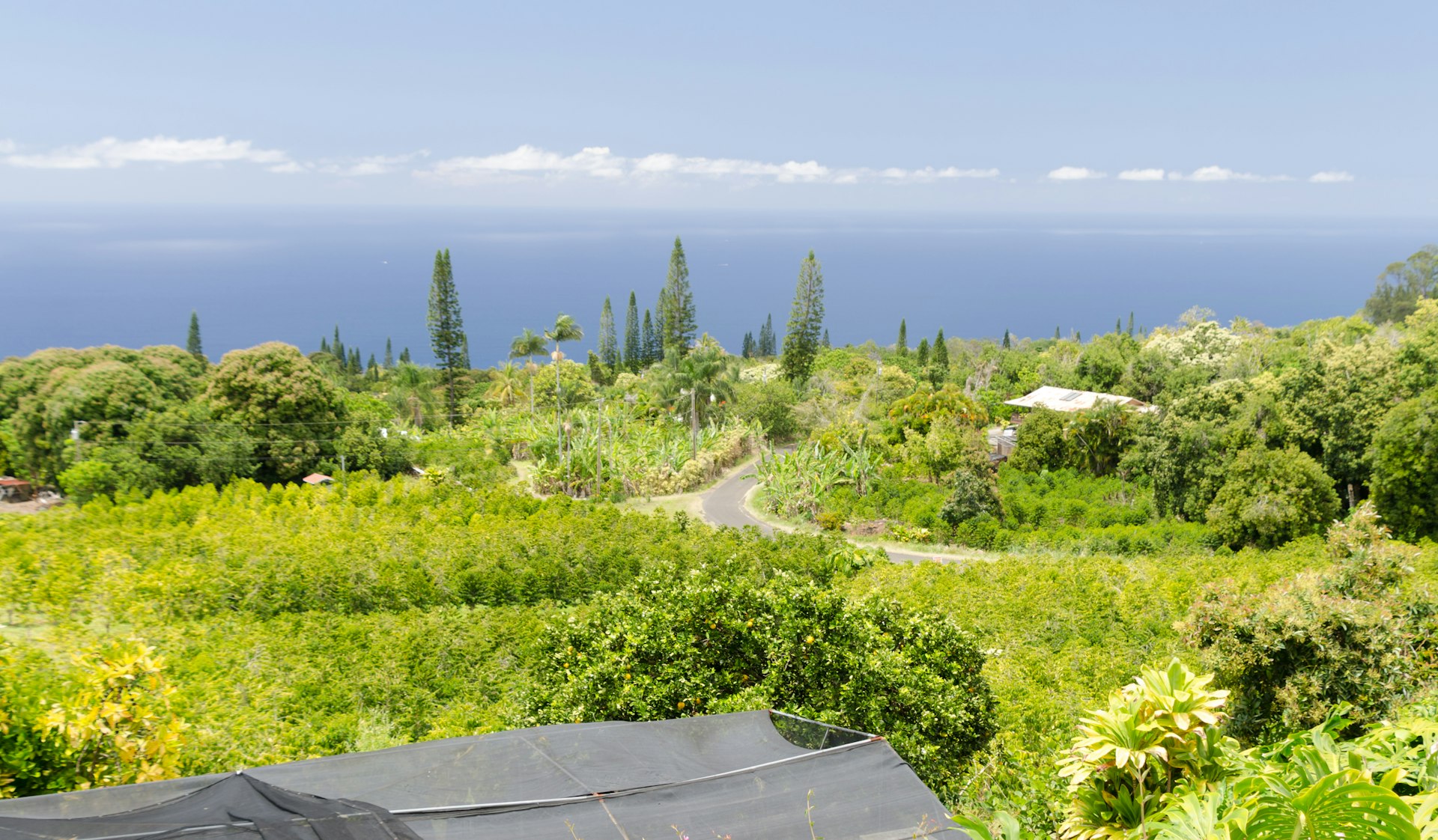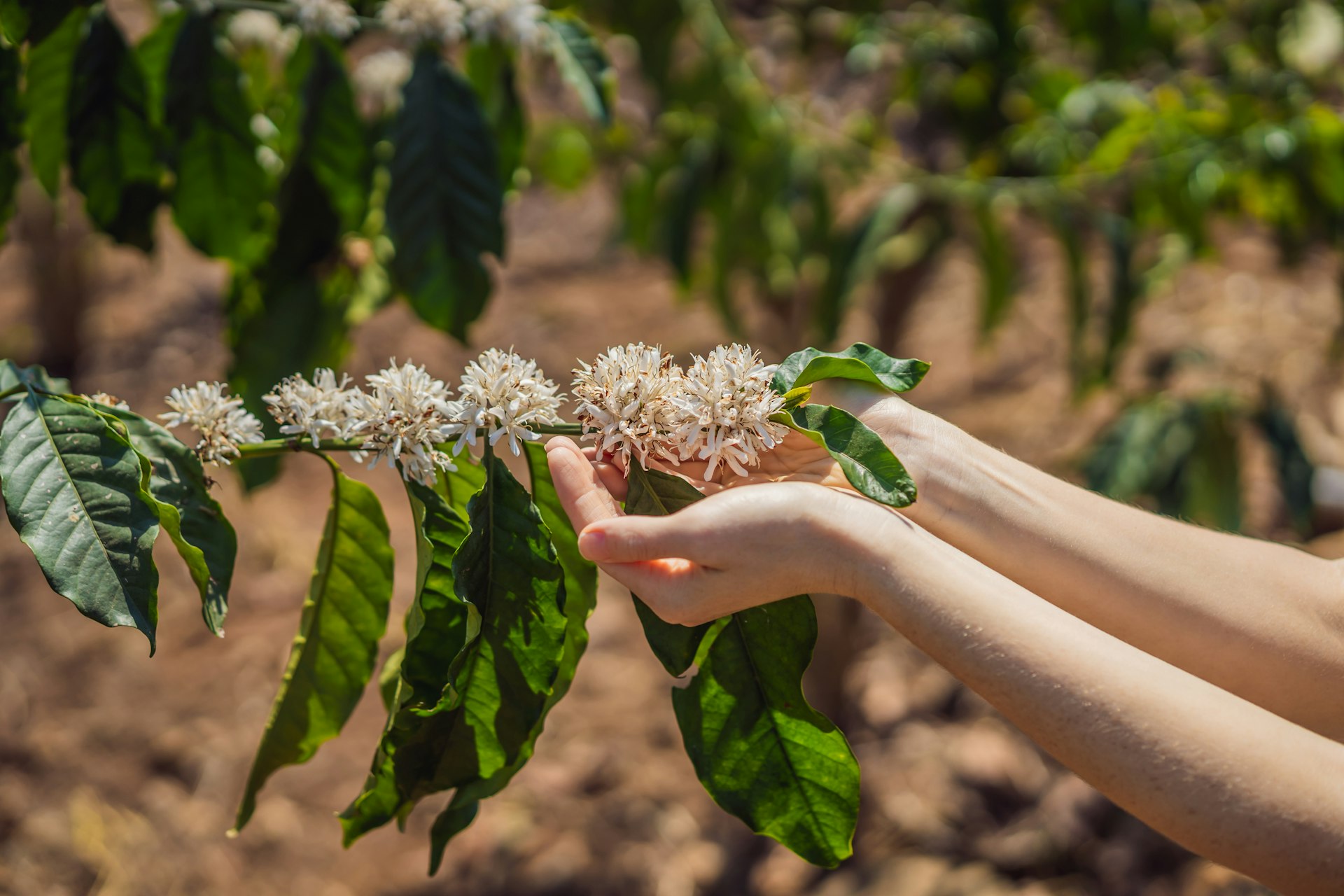This article was adapted for digital from Hawai’i, The Big Island, due to publish in August 2024. Written by Ashley Harrell, Jade Bremner and Megan Minor Murray.
With its strong, smooth flavor, Kona coffee is some of the world’s best. A trip to the Big Island is therefore incomplete without sampling its premier product (don’t mess with the blends, though – the 100% pure Kona coffee is where it’s at). Exploring a coffee farm or two is also a great way to learn about the island’s agricultural heritage and history. Just be sure to make reservations for tours and other activities – you won’t want to have braved these steep, narrow roads for nothing.
Exploring Hawaiʻi coffee country
Up in the hills surrounding Hōlualoa, you’ll find some of the Big Island’s most enchanting environs: this is where high elevation, frequent cloud coverage and fertile volcanic soil come together to produce some of the island’s best coffee beans. Kona coffee has had gourmet cachet for decades, and today many coffee farms have opened roadside visitor centers and gift shops where they give free samples and tours. The best time to visit is during the harvest season, running from August through February, when “Kona snow” (white blossoms) and “cherries” (mature berry fruit) cluster on the coffee trees.
Best coffee experiences on the Big Island
Kona Coffee Living History Farm
Many coffee farm tours are 15-minute affairs, but the Kona Coffee Living History Farm, run by the Kona Historical Society (an affiliate of the Smithsonian Institute), goes deeper. More than just an exploration of how coffee is grown and harvested, this self-guided experience on a 5.5-acre working coffee farm includes encounters with costumed interpreters who demonstrate traditional crafts, agricultural practices and the everyday activities of rural Japanese immigrants to South Kona. Several of the docents grew up on area coffee farms, so they speak from experience about the orchards, processing mill, drying roofs and main house. It’s $20 per person, with no reservations required. It’s open between 10am and 2pm Tuesday and Friday and located 10 miles south of Hōlualoa in Captain Cook.
Hōlualoa Kona Coffee Company
For those who would like to support one of the island’s eco-friendliest producers, there’s Hōlualoa Kona Coffee Company. The company’s small, organic-certified Kona Leʻa Plantation is less than 2 miles south of Hōlualoa. No pesticides or herbicides are used, and as you drive up, watch out for the free-ranging geese who do double duty as lawnmowers and fertilizer. A visit here is a peek into rustic, jungle-grown sustainability: you’ll be surrounded by composted coffee-cherry skins, mulched green waste and sacks of organic fertilizer. Tours are free and take place 8am to 3pm, Monday through Thursday.
Greenwell Farms
Another popular tour is that of Greenwell Farms, a 150-acre family farm established in 1850 and run by fourth-generation Greenwells. One of Kona’s oldest and best-known coffee plantations, it roasts coffee cherries from more than 200 local growers. On the free guided tour, you’ll learn how coffee goes from seed to cup; samples are on offer before and after. Tours run for around an hour and are available from 9am to 3pm daily. For a more in-depth experience, the deluxe tour and tasting visits the cupping room, roasting room, farm, wet mill, nursery and dry mill. It happens at 9:30am and 1:30pm on weekdays and costs $40 per person.

Hula Daddy Kona Coffee
If you’d like a side of jaw-dropping ocean views with your award-winning coffee, we suggest Hula Daddy Kona Coffee, less than 5 miles north of Hōlualoa. Its epicurean tasting room and eco-conscious, 33-acre farm is also a great place to learn about cupping and the unusual coffee-production techniques used to create the signature Kona Oli and Kona Sweet beans. The $35 tours take place at 10:15am and noon on Tuesday, Wednesday and Friday. Reserve in advance.
UCC Hawaii
The 26-acre farm of UCC Hawaii is as extension of one of the largest coffee companies in all of Japan. The ocean-view farm is divine, and you can tour it for free between 9am and 4:30pm daily, but there’s also a harvest tour (available seasonally; $30 per person) and a roastmaster tour ($50 per person), during which visitors roast a half-pound of their own Kona coffee.
Where to stay with a coffee twist
The eclectic A Beautiful Edge of the World B&B is a home hidden away in a quiet, tropical neighborhood. The retired professor/writer/pilot/coffee farmer who runs the place is a wealth of information, and his wife cooks up fabulous breakfasts. Budget-friendly rooms are comfy, with private lanais overlooking the ocean. Meantime, Belle Vue Kona is a favorite with travelers and boasts very helpful owners. It’s a pricier spot, but it’s located on a 5-acre coffee plantation. The rooms with covered lanai have sweeping ocean views. At the Aloha Guest House, you’ll swoon at the heady ocean views from the shared lanai, living and dining area and two guest bedrooms on this 5-acre farm. The meticulous hosts are serious about their from-scratch breakfasts, sourced from their own fruit trees and estate-grown coffee.

A bit of culture while traveling through coffee country
At a bend in the road where Hwy 11 and Hwy 180 intersect, little Honalo is your first sign that more than miles separate you from the touristy Kona coast. The strong presence of Japanese culture within the coffee belt is palpable in the form of temples and restaurants. The first building you see when entering from the north is the Buddhist Daifukuji Soto Mission. Slip off your shoes and admire the two ornate, lovingly tended altars. Everyone is welcome to join Zen meditation sessions, tai chi lessons and taiko (Japanese drum) practices; check for details. And for a window into local life, grab a table at Teshima’s Restaurant, a wonderful, family-run place that’s been dishing up Japanese comfort food since the 1950s.
Keep planning your trip to the Big Island:
Put these 10 essential experiences on your itinerary
Support local-led ecotourism experiences on the Big Island
Explore the volcanic wonders of the Big Island
